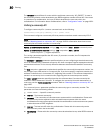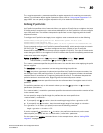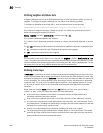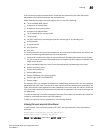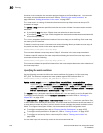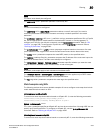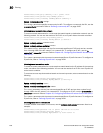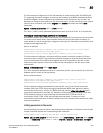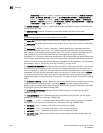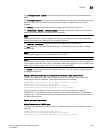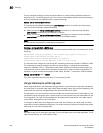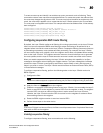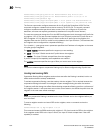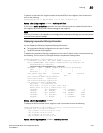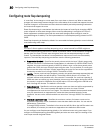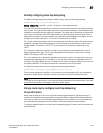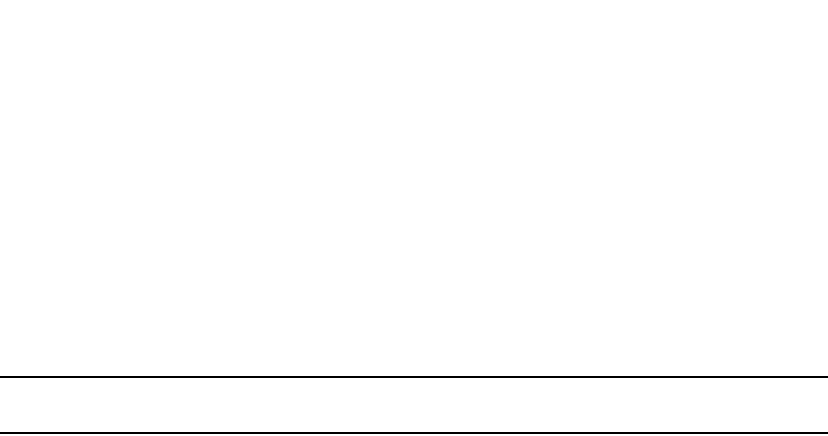
1048 PowerConnect B-Series FCX Configuration Guide
53-1002266-01
Filtering
30
[dampening [<half-life> <reuse> <suppress> <max-suppress-time>]] [[default] interface
null0 | [ip [default] next hop <ip-addr>] [ip next-hop peer-address] | [local-preference
<num>] | [metric [+ | - ]<num> | none] | [metric-type type-1 | type-2] | [metric-type
internal] | [next-hop <ip-addr>] | [nlri multicast | unicast | multicast unicast] | [origin igp
| incomplete] | [tag <tag-value>] |
[weight <num>]
The as-path prepend <num,num,...> parameter adds the specified AS numbers to the front of the
AS-path list for the route.
The automatic-tag parameter calculates and sets an automatic tag value for the route.
NOTE
This parameter applies only to routes redistributed into OSPF.
The comm-list parameter deletes a community from a BGP4 route community attributes field.
The community parameter sets the community attribute for the route to the number or well-known
type you specify.
The dampening [<half-life> <reuse> <suppress> <max-suppress-time>] parameter sets route
dampening parameters for the route. The <half-life> parameter specifies the number of minutes
after which the route penalty becomes half its value. The <reuse> parameter specifies how low a
route penalty must become before the route becomes eligible for use again after being
suppressed. The <suppress> parameter specifies how high a route penalty can become before the
Layer 3 Switch suppresses the route. The <max-suppress-time> parameter specifies the maximum
number of minutes that a route can be suppressed regardless of how unstable it is. For information
and examples, refer to “Configuring route flap dampening” on page 1054.
The [default] interface null0 parameter redirects the traffic to the specified interface. You can send
the traffic to the null0 interface, which is the same as dropping the traffic. You can specify more
than one interface, in which case the Layer 3 Switch uses the first available port. If the first port is
unavailable, the Layer 3 Switch sends the traffic to the next port in the list. If you specify default,
the route map redirects the traffic to the specified interface only if the Layer 3 Switch does not
already have explicit routing information for the traffic. This option is used in Policy-Based Routing
(PBR).
The ip [default] next hop <ip-addr> parameter sets the next-hop IP address for traffic that matches
a match statement in the route map. If you specify default, the route map sets the next-hop
gateway only if the Layer 3 Switch does not already have explicit routing information for the traffic.
This option is used in Policy-Based Routing (PBR).
The ip next-hop peer-address parameter sets the BGP4 next hop for a route to the specified
neighbor address.
The local-preference <num> parameter sets the local preference for the route. You can set the
preference to a value from 0 through 4294967295.
The metric [+ | - ]<num> | none parameter sets the MED (metric) value for the route. The default
MED value is 0. You can set the preference to a value from 0 through 4294967295.
• set metric <num> – Sets the route metric to the number you specify.
• set metric +<num> – Increases route metric by the number you specify.
• set metric -<num> – Decreases route metric by the number you specify.
• set metric none – Removes the metric from the route (removes the MED attribute from the
BGP4 route).



